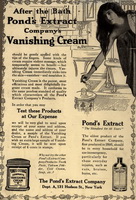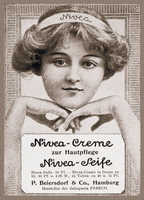The 1900s: a turning point
|
<< < > >> |

|
Around 1900, the art of packaging, as well as attention to detail and quality, became more asserted; they soon became the symbol of French luxury. Perfumes, ointments and make-up [1]
were presented in elegant bottles and pots featuring softer and more elaborate shapes than before. In Paris, in the elegant districts, sumptuous boutiques became available to clients, displaying marble, chiseled bronzes,
bas-reliefs, tapestries, period furniture, careful lighting, crystal chandeliers, and offering their products in beautiful packaging with labels, golden threads and sophisticated knots. Artists and artisans could give free
rein to their talents.

|
"Violettes russes" by Gellé frères, an hygienic hair lotion with a beautiful label (1898).
|
| |
| © Collection privée |
|
|

|
"Sid-Ous", a cream by Guerlain, for the care of the face and the hands. Around 1910.
|
| |
| © Collection privée. |
|
|

|
Label from Charles Faÿ Perfume House.
|
| |
| BIU Santé Pharmacie. |
|
|

|
Label from Charles Faÿ Perfume House.
|
| |
| BIU Santé Pharmacie. |
|
|
| The products themselves became more refined. A good cream had to leave the skin soft to the touch, and also to have adhering qualities so that the “beautifying work” it initiates can be enhanced by the
toilet powder. Competition progressively became international with the first cream based on an oil-in-water emulsion invented by pharmacist Paul Beiersdorf, and, across the Atlantic, with Pond’s Vanishing
cream. |

|
Advertising for Pond’s Vanishing Cream (1910).
|
| |
| © Special Collections Library, Duke University. |
|
|

|
Advertising for " Nivea Crème", by Paul Beiersdorf & Co (1911).
|
| |
| © Special Collections Library, Duke University. |
|
|

| Toilet vinegar, with antiseptic agent, by pharmacist Brunot from Limoges. |
| |
| © Collection privée. |
|
|
|